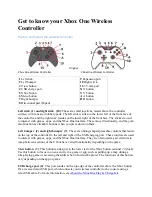
Sequence of operation
46
VVT Zone Controller
Demand limiting
Demand limiting is a cost-saving strategy to reduce energy consumption. The strategy expands the setpoints
when the system reaches one of 3 levels of consumption. With the expanded setpoints, the equipment works
less, thereby saving energy.
If the VVT Zone Controller receives a demand limit signal through the network, it expands its setpoints based
on the demand level. The default amount is 1°F for demand level 1, 2°F for demand level 2, or 4°F for
demand level 3.
Linkage
The i-Vu Open Control System uses linkage to exchange data between the zone terminals and their air source
to form a coordinated HVAC system. The system's air source controller, zone controllers, and bypass controller
are linked so that their data exchange can be managed by one zone controller configured as the VVT Master.
The VVT Master gathers the following information from the slave zone controllers: occupancy status,
setpoints, zone temperature, relative humidity, CO
2
level, damper position, and optimal start data. The VVT
Master performs mathematical calculations and algorithms on the data and then sends the composite
information to the air source. The VVT Master receives information from the air source such as mode, supply
air temperature, and outside air temperature, if present, and passes that information to all linked controllers.
The VVT Master determines system operation by prioritizing heating and cooling requirements from all the
zones based on their occupancy and demand. The VVT Master scans the system continuously to determine if
any zones are occupied. Occupied zones are a higher priority than unoccupied zones. The VVT Master
evaluates all the occupied zones' heating or cooling demands and sends a request to the air source for:
•
Cooling, if the number of occupied zones with cooling demands exceeds the number of occupied zones
with heating demands, and the demand is greater than or equal to the number of configured
Linkage
Callers
•
Heating, if the number of occupied zones with a heating demand exceeds or is equal to the number of
.
Linkage Callers
If no zones are occupied or no occupied zones require heating or cooling, the VVT Master performs the
evaluation described above for the unoccupied zones.
.
The VVT Master then gathers the following information and sends it to the air source:
•
The setpoints and zone temperature from the zone with the greatest demand for the requested air
source mode (heating or cooling). (This zone is called the reference zone.)
•
The system occupancy status
•
Most open damper position from any zone
•
RH and CO
2
The air source responds by sending the air source mode, supply air temperature, and outside air temperature.
The air source verifies the mode by comparing its supply air temperature to the space temperature received
through Linkage. See the air source documentation for operation and parameters used to verify its mode.
This verification allows the VVT system to determine if the desired air source mode is actually being provided.
For example, if the VVT Master sends a request for heating and the air source does not have heat or it’s heat
has failed, the air source's actual mode indicates that and its current mode is sent to the zones so that they
can control accordingly.
values (if applicable)
The system remains in that mode until all zones of that demand are satisfied or until a fixed 30 minute mode
reselect timer causes a forced re-evaluation of the system. If there is no demand for the opposite mode, the
reselect timer starts again and the current mode continues until all zones are satisfied or until the reselect
timer expires, repeating the process. If there is a demand for the opposite mode, the VVT Master sends the
reference zone's space temperature and setpoints to the air source and restarts the reselect timer. The air
source re-evaluates its demand based on the new information and goes to the Vent mode until the new mode
can be verified as described above. The amount of time this takes is determined by the air source’s operating
parameters.
Содержание OPN-VVTZC
Страница 2: ......
Страница 27: ...VVT Zone Controller 23 Single duct 2 position hot water Single duct modulating hot water...
Страница 29: ...VVT Zone Controller 25 Fan box 2 position hot water Fan box modulating hot water ducted or baseboard...
Страница 30: ...Installation 26 VVT Zone Controller Fan box combination baseboard and ducted heat Fan box 2 stage electric heat...
Страница 79: ......
















































